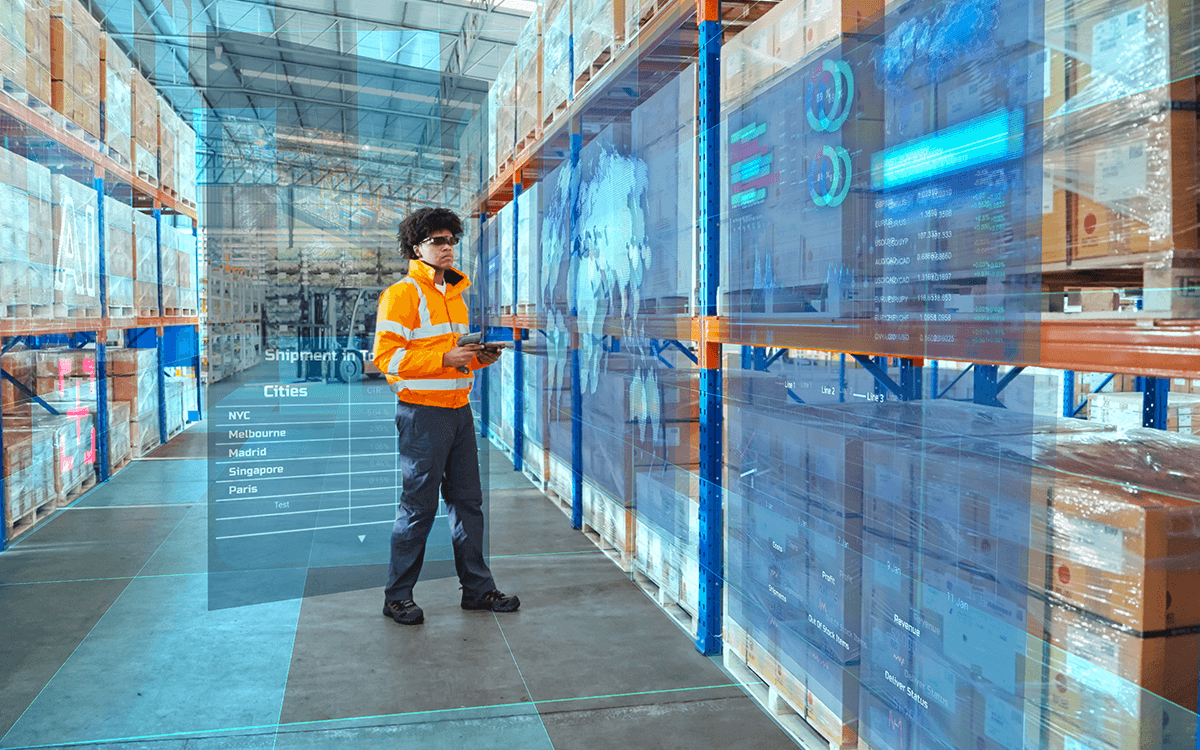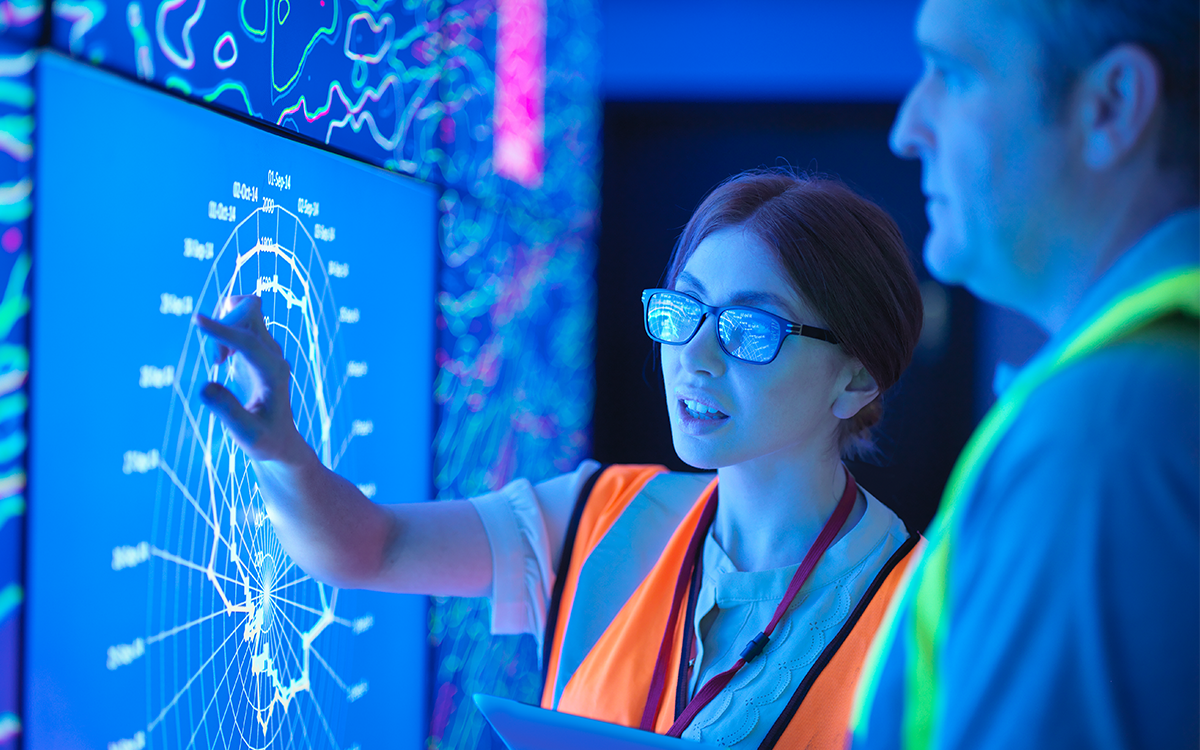CX in retail: How to use data-driven automation to deliver a seamless shopping experience
Fujitsu / March 27, 2024
For all of us, the lines are more blurred between our digital life and ‘real-world’ life. Technology has become increasingly integrated into our day-to-day, influencing the way we live, work, and shop. For today’s retailers, this means there’s a myriad of touchpoints to connect with customers. But no matter the channel of contact, customers expect a seamless, personalized retail experience. And it doesn’t matter to them how you make this happen, as long as you can meet the demand.
Central to achieving this outcome is digital transformation. But it’s about more than just implementing the latest technology; as a retailer, you need to build an effective omni-channel experience to survive and thrive. AI-enabled automation can facilitate this convergence to create valuable, joined-up shopping experiences that allow you to delight customers, operate sustainably, and grow your business. Read on to learn how you can enhance customer experience (CX) in retail, with the support of advanced digitalization and sustainable practices. And the benefits this can bring to your business.
Less multi-channel, more omni-channel
In retail, the more traditional, multi-channel approach tends to have the same end goals as the ‘new wave’ of an omni-channel strategy. In both cases, the base objective is to convert interest into action, so the customer buys a product (or takes whatever action the retailer is encouraging). However, there are two major differences between these approaches.
Firstly, whereas an omni-channel strategy (as the name suggests) encompasses all available channels, a multi-channel strategy may only include some touchpoints (such as in-store and some social media mobile platforms). In this way, multi-channel has its merits in allowing retailers to create a consistent narrative across these touchpoints, while often incurring lower costs with fewer channels to manage. But each channel tends to be siloed, promoting a product or service, and therefore the strategy is more product-centric, getting the customer from point A to point B.
This brings us to the second difference – one of mindset. Omni-channel strategies give retail leaders the opportunity to take a more holistic approach towards touchpoints. In other words, not seeing individual channels such as desktop, mobile, and in-person as separate from one another – applying a digital sticky tape to hold them together. It’s a unification of your processes, data, logistics, touchpoints, and so on.
This mindset helps retailers and merchants to become more customer-centric by looking at the entire buying journey, while simultaneously pinpointing individual opportunities to enhance the customer lifecycle. For example, let’s say a customer of yours browses a product online, chats with an online agent, reserves the product in store, buys it, and then returns it via courier. Throughout what would normally be a complex and siloed set of activities, the customer is recognized at each stage, receives a personalized service, and can rest assured that the product logistics are optimized for efficient delivery. This all helps to maximize their experience.
Barriers to bridging the gap
Of course, achieving goals like seamless processes and enhanced CX in retail comes with many challenges. Profit is and always has been ‘king’ in business. But, aside from the obvious cost justification of investing in technology during hard economic times, delivering rich and relevant CX has become much more complex. Shopping habits have changed hugely in recent years – making the traditional brick-and-mortar store more vulnerable than ever. And this has caused expectations to evolve at a faster pace than retailers expected, with many businesses still playing catch up as the shift to ecommerce continues to gain momentum.
Retail leaders also face a unique challenge when seeking to integrate contemporary technologies and strategies, owing to the complex structure of their business models. With so many moving parts, any significant change that’s introduced will have a knock-on effect. As a result, organizational siloes tend to exist and systems don’t ‘talk’ effectively to each other – something retailers need to overcome. In addition, there is the very real need to find more efficient ways of working to decrease environmental impact. With all these challenges in place, how can you adapt quickly enough to remain competitive? The answer lies in data.
The making of a modern retail environment
When looking to modernize, starting from scratch just isn’t feasible. So, a balance must be found in bringing together the right technology and customer-centric objectives, while ensuring business continuity and meeting consumer demand. That’s where AI-enabled automation and integrated IoT devices come in. These technologies can collate, analyze, and provide information to facilitate joined-up shopping experiences.
Capturing this data essentially gives you a lens of visibility previously unattainable. You can use this information to look at opportunities across the customer journey, evaluating all touchpoints with a view to plugging any gaps and delivering personalized services. And, with ever-evolving AI capabilities in your inventory, you can make decisions fast. For example, AI-based video cameras can automatically analyze and monitor in-store customer behavior, allowing you to plot optimal store layouts and product placements. Online, customer data could help you offer personalized incentives like delivery slots that fit in with your customers’ busy lives. And internally, data analysis across your business and supply chain can benefit you too, with suggestions on where you can save energy and water, and implement more sustainable practices in an instant.
Today’s landscape of social and economic change means it’s paramount for retailers to adapt and evolve, with the goal of achieving seamless, omni-channel CX. It’s not just about retaining your customers, but enriching their experience, which in turn, can lead to a greater frequency of purchasing and increased basket sizes. In short, business growth through enhanced brand perception, engagement, and efficiency.
Automation can also help you enrich the lives of staff, taking on transactional, monotonous jobs (like an automated, frictionless checkout). So, your employees can carry out more fulfilling roles. Society, particularly younger generations, expect today’s businesses to be responsible and operate ethically. And this includes protecting staff wellbeing as well as being answerable to the planet with more efficient, less wasteful ways of operating.
Let’s create the frictionless customer journey
At Fujitsu, we strive to use technology in a way that makes people happier, safer, and more fulfilled. So, our retail customers can have a more positive impact on society and the planet. We’re guiding retailers towards a future marked by enhanced CX, increased efficiency, and exceptional visibility through the use of innovative technologies. It starts by asking and investigating the question, “What is it that makes the shopper stay on their journey with you?” Then making small, iterative changes, reviewing their effect, maximizing the positives, and removing any frictions – until you get the recipe just right.
In this way, we’ll work with you to map the optimal buying journey, leveraging our technology, knowhow, and services – from omni-channel migration to trusted end-to-end support. Our global reach, along with our innovative partner GK Software – a leader in retail solutions for 30 years – we’ll help you deliver your vision for unified commerce. That’s a world where customers can flow effortlessly between digital and physical touchpoints. So, you can consistently increase sales, win loyal customers, and ensure a positive impact on the planet.

Editor's Picks












